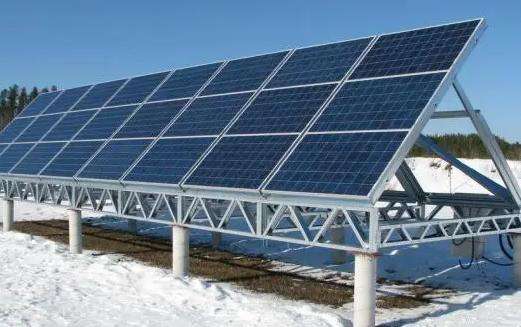When water is broken down by electricity, it will produce
hydrogen
and
oxygen
2H2O==electricity== 2H2↑+O2 ↑
According to
the law of conservation of mass
, the types of elements< /p>
remain unchanged before and after the reaction. H2O decomposes into two types of gas
gas
, apparently hydrogen composed of hydrogen and oxygen composed of oxygen
Quant to know why
The positive electrode
is oxygen and the negative electrode is hydrogen:
Once the water is decomposed by electricity,
hydrogen ions
and oxygen ions are produced. Hydrogen ions are
positively charged
and oxygen ions are
negatively charged
. According to the "opposite attraction" between the charges, it is obvious that oxygen moves towards the positive electrode and hydrogen towards the negative electrode (charged ions collect into gases).
chi equationmics of hydrogen and oxygen generated by electrification of water
The phenomenon of water decomposition by electricity is as follows: after application electricity, bubbles appear on the electrode and the gas volume ratio is approximately 1:2. The positive electrode produces oxygen and the negative electrode produces hydrogen. The volume ratio of hydrogen and oxygen is 2:1 and the mass ratio is 1:8.
The process of electrolytic decomposition of water is a process chemical reaction. After applying electricity, water molecules are broken down into hydrogen atoms and oxygen atoms on the electrode. These atoms are each attracted to different electrodes, producing hydrogen and oxygen.
During the electrification process, water molecules are broken down into hydrogen ions (H+) and hydroxide ions (OH-) through an ionization process.not. This process is also called electrolysis. During electrolysis, the positive electrode (anode) attracts negatively charged ions (hydroxides), while the negative electrode (cathode) attracts positively charged ions (hydrogen).
Over time, hydroxide ions are oxidized on the positive electrode to produce oxygen (O2) and electrons (e-), while hydrogen ions are reduced on the electrode negative to produce hydrogen gas (H2) and electrons (e-).
So when an electric current passes through water and electrolysis, oxygen and hydrogen are produced. The two gases are produced from two electrodes respectively and can be verified as oxygen and hydrogen respectively by collecting and igniting the gases.
The principle of electrolytic decomposition of water:
1. Electrode reaction: During the electrolysis process, water moleculesare broken down into hydrogen atoms and oxygen atoms. the electrodes. Water molecules on the positive electrode (anode) lose electrons, producing oxygen atoms and hydrogen ions, while water molecules on the negative electrode (cathode) gain electrons, producing atoms hydrogen and hydroxide ions.
2. Subtransfer: In the electrode reaction, electrons are transferred from the water molecules to the electrode. The electrons from the positive electrode are captured by the oxidizing agent, while the electrons from the negative electrode are captured by the reducing agent.
3. Redox reaction: During the electron transfer process, water molecules on the positive electrode are oxidized by the oxidant to generate oxygen. Gas atoms and hydrogen ions, while molecules of water on the negative electrode are reduced by the reducing agent to generate hydrogen atoms and hydroxide ions.
4. Gas collection: Due to the different masses of hydrogen atoms and oxygen atoms, the volume ratio of hydrogen and oxygen produced is 2:1. The gases can be collected and ignited to check that they are hydrogen and oxygen respectively.
The chemical equation for the reaction of decomposition of water to generate hydrogen and oxygen under the conditions of electricity: < /strong>
2H? O=Electricity =2H?↑+O?↑
When water is electrolyzed, oxygen is produced at the anode and hydrogen is produced at the cathode.
There are hydrogen ions and hydroxyl ions in water. Under the condition of electricity in water, hydrogen ions move towards the cathode. The four hydrogen ions lose four charges and produce two hydrogen molecules, hydroxide. The ions move towards the anode and after losing 4 electrons from the 4 hydroxyl ions, 2 water molecules et an oxygen molecule are produced.
Detailed information:
Pure water will only produce hydroxyl radicals after electrolysis. Ions, hydrogen, oxygen and hydrogen ions.
Electrolyzed water generally refers to the product generated after electrolysis of water containing salt (such as sodium sulfate, table salt is not allowed and chlorine gas will be generated ). The electrolyzed water itself is neutral and other ions can be added, or it can be separated by a semi-permeable membrane to generate water with two properties. One of them is alkaline ionized water and the other is acidic ionized water.
Electrolyzed water using sodium chloride as the electrolyte contained in water will contain sodium hydroxide, hypochlorous acid and sodium hypochlorite after electrolysis.
Electrolyzed water generally refers to the product generated afterelectrolysis of water containing salt (such as sodium chloride). The electrolyzed water itself is neutral and other ions can be added, or it can be separated by a semi-permeable membrane to generate water with two properties.
One is alkaline ionized water and the other is acidic ionized water. Electrolyzed water using sodium chloride as the electrolyte contained in water will contain sodium hydroxide, hypochlorous acid and sodium hypochlorite after electrolysis (if pure water undergoes electrolysis, only the hydroxide ions, hydrogen gas, oxygen and hydrogen ions will be produced).
Under certain conditions, the acidic electrolyzed water produced after electrolysis can be used for sterilization. Oxygen generated at the electrode based on the principle of electrolysis will combine with chlorine to form an aqueous solution of hypochlorite or chlorite ions at a lower pH value (e.g.xample, pH < 2.7).
In addition, although some claim that electrolyzed alkaline water can "neutralize the acidic body", in fact, when the alkaline water produced by electrolysis reaches the stomach, it will be transformed into acid by highly acidic stomach acid. .














